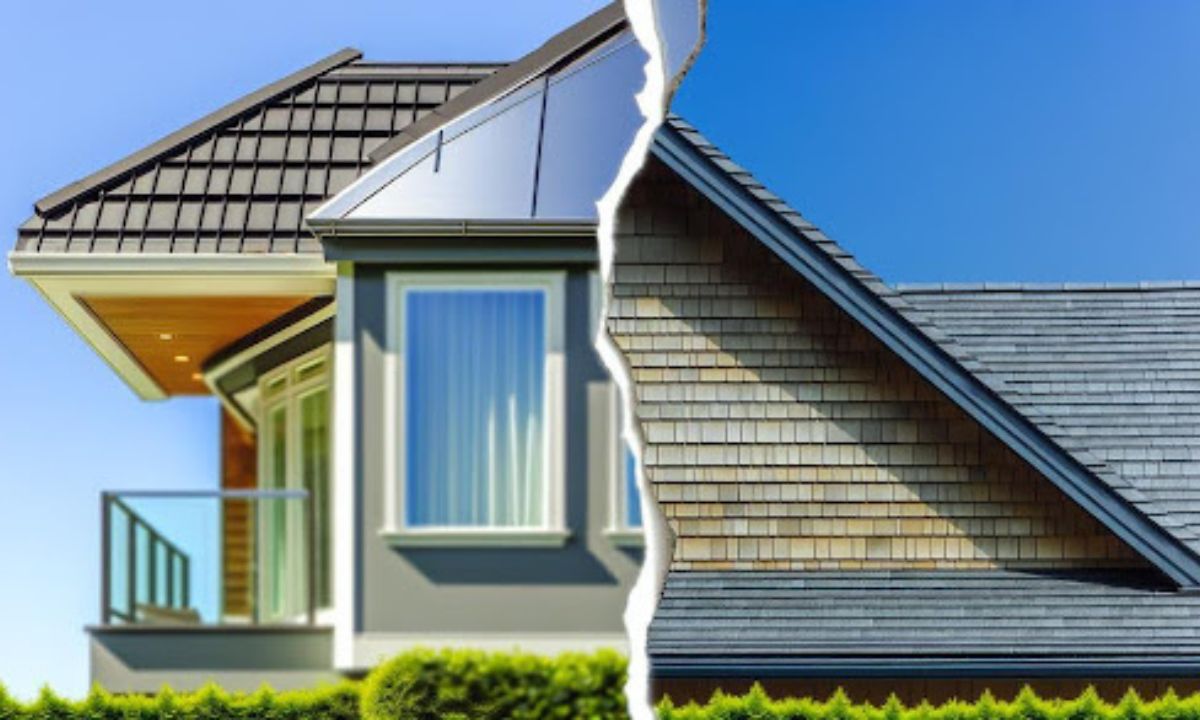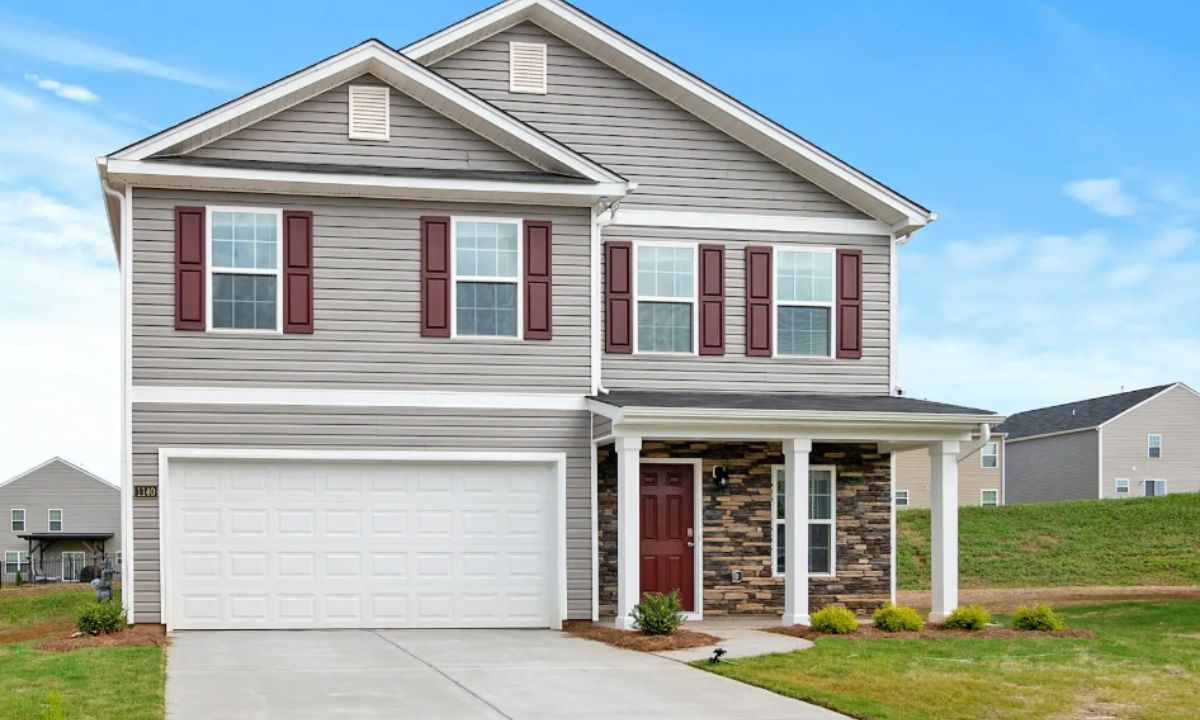Picture yourself standing outside, gazing up at a sleek, modern metal roof glistening in the sunlight versus a traditional shingle roof that exudes classic charm. When you’re deciding between these two options for your home, it’s crucial to weigh the pros and cons carefully. Metal roofs boast impressive durability, potentially lasting up to 70 years, while shingles offer a more budget-friendly initial investment. However, the longevity, maintenance requirements, and aesthetic appeal vastly differ. So, what does this mean for your home’s energy efficiency and environmental impact? Let’s explore further to find out.
Durability and Lifespan
When evaluating the durability and lifespan of roofing materials, you’ll find that metal roofs significantly outperform shingles. Metal roofs boast impressive weather resistance, handling extreme conditions like heavy snow, hail, and high winds with ease. Their maintenance requirements are minimal compared to shingles, which often need regular inspections and repairs.
Shingles, typically made from asphalt, suffer from a shorter lifespan, usually around 20-30 years. In contrast, metal roofs can last 40-70 years, depending on the material options you select, such as aluminum, steel, or copper. Each of these materials offers distinct advantages in terms of durability and performance.
Another aspect to consider is warranty coverage. Metal roofing manufacturers often provide extensive warranties, sometimes up to 50 years, reflecting their confidence in the product’s longevity.
Shingle warranties tend to be shorter, usually around 20-25 years, and often come with more exclusions and limitations.
Cost and Installation
Although cost and installation are critical factors in choosing a roofing material, you’ll find that metal roof vs shingles present distinct differences in these areas. Metal roofs typically have a higher upfront cost compared to shingles. However, the long-term savings can be substantial. Metal roofing systems often come with extended warranties and have lower maintenance requirements. You won’t need to worry about frequent repairs or replacements, which can add up over time.
Installation of metal roofs requires specialized expertise. Contractors need to have experience with metal roofing to ensure proper installation, which can drive up labor costs.
Conversely, shingles are generally less expensive to install and don’t require as much specialized knowledge, making them a more budget-friendly option initially. However, shingles can have higher maintenance requirements. They’re prone to issues like moss growth, curling, and granule loss, which can lead to more frequent repairs.
When considering the long-term savings, metal roofs stand out. Their durability and low maintenance needs translate to fewer expenses over the roof’s lifespan. While the initial investment is higher, the reduced ongoing costs make metal roofs a financially sound choice in the long run.
Aesthetic Appeal
While cost and installation are vital considerations, the aesthetic appeal of your roofing material also plays a significant role in your decision-making process. Both metal roofs and shingles offer unique design choices that can significantly impact your home’s curb appeal.
Metal roofs provide a modern, sleek look with a variety of color options and finishes. You can choose from standing seam panels, corrugated sheets, or even metal shingles that mimic traditional materials. This versatility allows you to tailor the roof to match your architectural style and personal preference. Moreover, metal roofs often require minimal maintenance, retaining their appearance for decades with little upkeep.
On the other hand, asphalt shingles offer a classic, traditional look that many homeowners find appealing. Shingles come in a wide array of color options and textures, making it easier to match your exterior décor. However, they do have higher maintenance requirements, as they’re more prone to algae growth, curling, and granule loss over time.
Ultimately, your choice between metal roofing and shingles will depend on your desired aesthetic and willingness to invest in long-term maintenance. Both materials offer distinct advantages, so weigh your options carefully to select the best fit for your home.
Energy Efficiency
Energy efficiency is a crucial factor to consider when choosing between a metal roof and shingles. Metal roofs excel in reflecting solar radiant heat, which can lower cooling costs by 10-25%. This reflective property reduces the heat island effect, making your home more energy-efficient. For optimal performance, ensure your metal roof has a high solar reflectance index (SRI).
On the other hand, shingles, particularly asphalt ones, absorb more heat, causing your cooling systems to work harder. However, modern shingle options with advanced granule technology can offer better insulation benefits than older products. Proper attic ventilation and insulation are essential regardless of the roofing material to maximize energy efficiency.
Maintenance requirements also play a role in energy efficiency. Metal roofs generally require less upkeep, maintaining their energy-efficient properties longer. They’re less susceptible to issues like algae growth, which can compromise the roof’s reflective abilities.
Shingles, however, may demand more frequent maintenance to keep their insulation benefits intact. Regular inspections for damage and algae removal are necessary to ensure they perform efficiently.
Environmental Impact
Evaluating the environmental impact of metal roofs versus shingles is essential for making an informed decision. When considering metal roofs, you’ll find they often have a lower environmental footprint. Metal roofing materials, such as aluminum and steel, are frequently sourced from recycled content, reducing the need for virgin material extraction. This means your choice of a metal roof can support sustainable material sourcing practices. Moreover, metal roofs are fully recyclable at the end of their lifecycle, offering excellent recycling options that minimize landfill waste.
On the other hand, asphalt shingles present some environmental challenges. The production process for asphalt shingles involves petroleum-based products, which can contribute to carbon emissions and environmental degradation. Additionally, shingles have a shorter lifespan compared to metal roofs, leading to more frequent replacements and increased waste.
While some asphalt shingles can be recycled, the process is less common and more complex compared to metal, limiting recycling options.
Conclusion
So, which should you choose—metal roofs or shingles? Imagine your home standing strong through decades of storms, with minimal repairs and energy bills slashed. Metal roofs offer unparalleled durability and long-term savings. But don’t dismiss shingles just yet; their lower initial cost and classic look might be just what your budget and style need. Weigh your options carefully. The ultimate choice hinges on your priorities: upfront costs, maintenance willingness, and a vision of your home’s future resilience and aesthetic.
ALSO READ: Explore Houses for Sale in Morrisville NC











